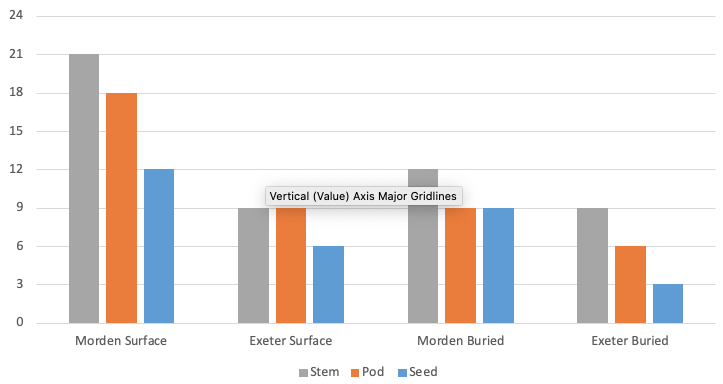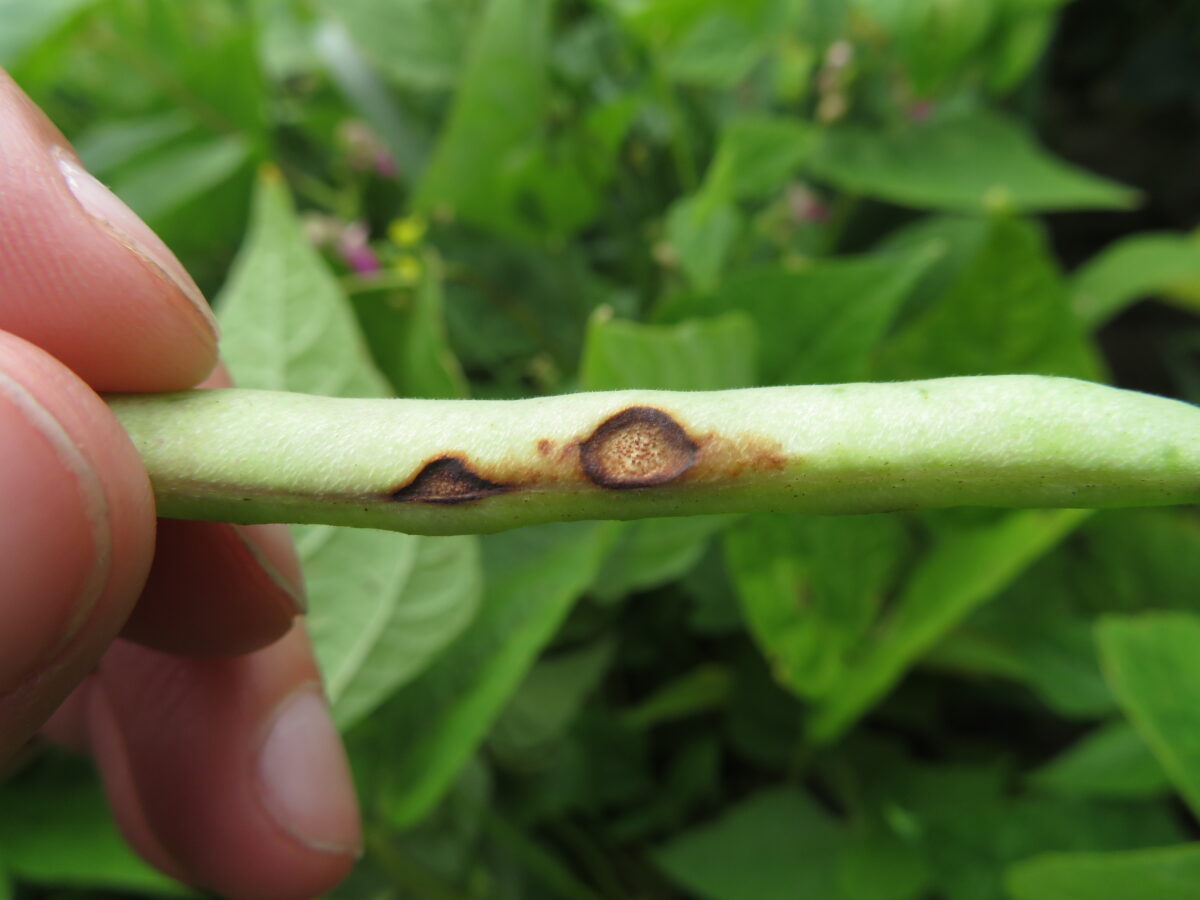Anthracnose can cause serious yield and quality losses in dry beans. It is primarily seed-borne but can spread from infected crop residue from a previous crop. It is managed using genetics, disease free seed, seed treatments and foliar fungicides, and cultural methods. Survival on residue is not clear but older research has shown that survival in Ontario was less than six months. The purpose of this study was to evaluate the survival of anthracnose on infected bean plant residue in Ontario and Manitoba.
Bean stems, pods and seed were put into mesh bags and then placed on the soil surface or 15 cm deep in the soil, at sites near Morden MB and Exeter ON. Samples were removed every three months for two years, and fungus survival was determined. A separate study measured survival in a crop rotation where an infected crop was followed in year two by fallow, a wheat crop or a bean crop, using conventional tillage versus a zero till system.

Bars within a group (location and residue placement) with the same letter are not significantly different (P<0.05).
Anthracnose survived longer at Morden than Exeter (Figure 1), and survival was greatest for stems, then pods, and then seed. Burying the crop residue in the soil reduced anthracnose survival on all residue types. In the rotation study, zero tillage allowed anthracnose to survive and infect a bean crop planted in year three at both sites. Overall, the burial of residue using tillage, along with milder and wetter weather encourages the break down of crop residue, and this kills anthracnose on the residue.
Originally published in Canadian Journal of Plant Pathology 2019. Volume 41. Pages 209-217. Revised in July 2020 for drybeanagronomy.ca.
